
newspaper
news
Eduardo Souto de Moura, a 58 year old architect from Portugal, is the jury’s choice for the 2011 Pritzker Architecture Prize, it was announced today by Thomas J. Pritzker, chairman of The Hyatt Foundation which sponsors the prize.
The formal ceremony for what has come to be known throughout the world as architecture’s highest honor will be in one of Washington, D.C.’s finest classical buildings, the Andrew W. Mellon Auditorium.
In announcing the jury’s choice, Pritzker elaborated, “This marks the second time in the history of the prize that a Portuguese architect has been chosen. The first was in 1992 when Alvaro Siza was so honored.”
Citation from the Jury
During the past three decades, Portuguese architect Eduardo Souta de Moura has produced a body of work that is of our time but also carries echoes of architectural traditions. His oeuvre is convincing proof of modern idiom’s expressive potential and adaptability to distinct local situations. Always mindful of context, understood in the broadest sense, and grounded in place, time, and function, Souto de Moura’s architecture reinforces a sense of history while expanding the range of contemporary expression.
Already in his first works, undertaken in the 1980s, Souto de Moura had a consistent approach that never adopted the trends of the moment. At that time, he was intensely out of fashion, having developed his individual path during the height of postmodernism. As we look back today, the early buildings may seem normal, but we must remember how brave they really were back then.
The versatility of his practice is evident in the variety of commissions he has undertaken with success. He is capable of designing from domestic to urban scale. Many of his early works in the 1980s were single-family houses and remain among his seminal works. However, the scope of his work has expanded: the Braga Municipal Stadium, Portugal, designed in 2000 is muscular, monumental and very much at home within its powerful landscape; the Burgo Tower, Portugal, designed at the beginning of the 1990s and built a decade later, consists of two buildings side by side, one vertical and one horizontal with different scales, in dialogue with each other and the urban landscape; the Paulo Regio Museum, completed in 2008, a grouping of volumes interspersed in the trees at its site in Cascais, Portugal, is both civic and intimate, and so appropriate for the display of art.
In their apparent formal simplicity, de Souto de Moura’s buildings weave together complex references to the characteristics of the region, landscape, site, and wider architectural history. Often simple geometries are underlined through interplay of solid and void or light and shadow. The restoration and adaptation of the Santa Maria Do Bouro Monastery into a hotel has taken a building from ruble to reinterpretation. Souto de Moura has created spaces that are both consistent with their history and modern in conception. The effectiveness of his works usually stems from the juxtaposition of elements and concepts. His unique capacity to embrace reality while employing abstraction creates an architectural language that transforms physicality into the metaphysical. Souto de Moura is an architect fascinated by the beauty and authenticity of materials. His knowledge of construction and skill with materials are always visible in his buildings. He has the confidence to use stone that is a thousand years old or to take inspiration from a modern detail by Mies van der Rohe. The thoughtful use of copper, stone, concrete and wood in the Cultural Center in Porto, completed in 1991, for example, is a testament to his ability to combine materials expressively. By modifying pavements, textures, pathways and public spaces for the subway system of Porto, he has granted new significance to public spaces. House Number Two, built in the town of Bom Jesus, Portugal, in 2007, has achieved an uncommon richness through the subtle banding in the concrete of its exterior walls. Eduardo Souto de Moura’s architecture it is not obvious, frivolous, or picturesque. It is imbued with intelligence and seriousness. His work requires an intense encounter not a quick glance. And like poetry, it is able to communicate emotionally to those who take the time to listen. His buildings have a unique ability to convey seemingly conflicting characteristics—power and modesty, bravado and subtlety, bold public authority and sense of intimacy—at the same time. For architecture that appears effortless, serene, and simple, and for the care and poetry that permeates each project, Eduardo Souta de Moura receives the 2011 Pritzker Architecture Prize.
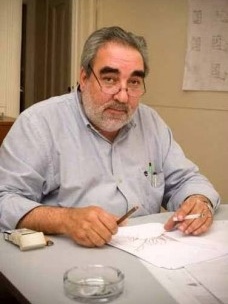
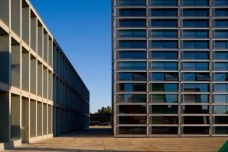
Foto Fernando Guerra
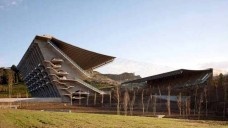
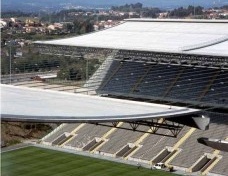
Architecture project for the Braga Stadium
Braga, Portugal, 2000-2003
Photos by Luis Ferreira Alves
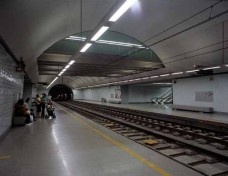
Architectural Project for the Porto Metro (subway)
Porto, Portugal, 1997-2005
Photos by Luis Ferreira Alves
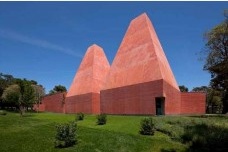
Paula Rêgo Museum - Cascais, Portugal, 2005-2009
Photos by Luis Ferreira Alves

